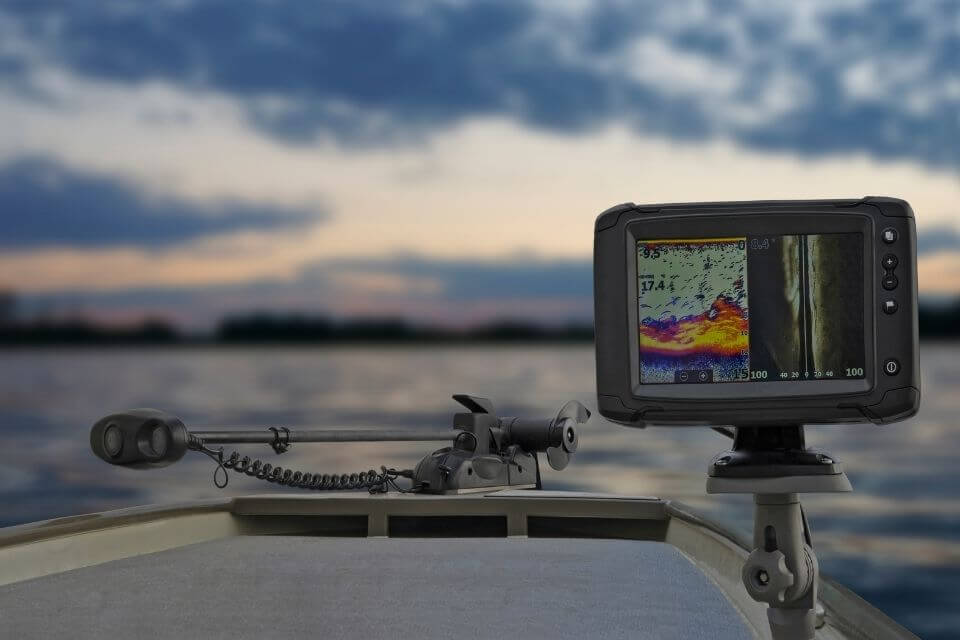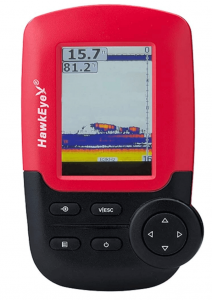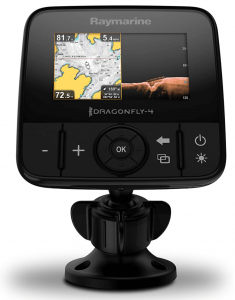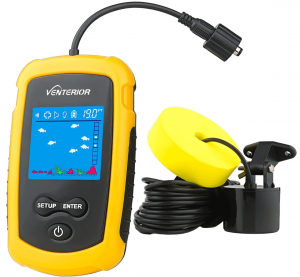What makes kayak fishing difficult is locating the spot where you can fish effectively. While there are a lot of tips that would guide you in finding these spots, some anglers, especially beginners, might find this task difficult. This is why you need the necessary accessory to find fish.
We can’t argue that the kayak fishing experience can be enhanced greatly with a good fish finder. Fish finders are very helpful in locating your bait, identifying the depth of water, and knowing where fish is abundant. We have reviewed and compared our top pick of the best kayak fish finder you can choose from. This article will also explain why kayak fish finders are necessary for you as an angler and what are the different things to consider in getting the right one.
What is a fish finder and why do you need one?
Some anglers might think that getting kayak fish finders are not necessary and could just be an added cost. However, that is a misconception. First, not all fish finders are costly. You don’t need to spend hundreds of dollars just to get a fish finder. There are a lot of inexpensive electronics out there you can use. Also, these basic fish finders have benefits you might need in your fishing – benefits that outweigh their costs.
So, what is the best fish finder and why do you need one for kayak fishing? These are just some of the reasons:
In locating bait
Sometimes, you might find it difficult to locate your bait once it is on the surface. During the times when baits are suspended in the water column, the sounder on your fish finder can locate them. You won’t regret purchasing a fish finder in times when you can’t place your bait on a dependable spot.
Finding structures or flat areas
When you want to catch a particular fish species, you would want to use your electronics. Finding the structure or the flat areas will help you identify the depth of the bottom, which is at your advantage when you are in an unfamiliar area where you do not usually fish and are not used to the fishing spots. With this, you would be avoiding guesswork and would have a more systematic way of fishing.
Great when diving off the kayak
Some want to dive off their kayak for recreation. However, they have to make sure first the depth of the water to avoid hitting any reef structure at the bottom. To save time, fish finders could predict the depth and you could identify if a particular area is a safe spot to dive into.
Aside from all these, a fish finder has several features that are very useful as well like the transducers, dual-screen options, and the like.
What makes a good fish finder?
Now that you know the importance of a fish finder, you need to know how to find the right one for your needs. There are several factors that you need to consider, and we listed all of them for you.
Power
Seeing the reading on display of your fish finder is one important thing that you need when you go out fishing. This can be achieved best only when your fish finder has great power. Fish finders with high wattage display readings faster compared to those with low wattage.
Fish finders with low wattage would display slowly and work best when you are fishing in shallow water.
Screen Resolution
Pixels are used when measuring screen resolution. Greater pixels on your screen would mean greater screen resolution. Through this, you can see more details on the screen. Aside from the screen resolution, you also want to consider the screen size for a clearer display. Screen resolutions that are no less than 240 x 160 pixels work best. But you can also go higher and pick those screen resolutions that have a maximum of 640 x 640 pixels.
Transducers
Another important part of a fish finder is transducers. They emit sonar waves and sonar signals to the water. Usually, you need to install the transducers to your fish finder as they are sometimes out of the box. However, you can easily mount it to your electronics. You would want to consider that cone angle. A wider cone angle means more area coverage.
If you are an angler who uses in-hull or thru-hull transducers, it would be great if you choose that which has plastic housing for hulls made of metal or fiberglass. For hulls made of aluminum and steel, however, it would be best to use transducers with stainless steel housing. Bronze housing is more appropriate for wood hulls.
Cone Angle
As mentioned, wider cone angles could give you more coverage. Transducer cones have angles that range from 9 to 60 degrees. If you prefer to fishing in different water depths, then choosing a 20-degree cone would be best for you. While wider angles give you wider coverage, the widening of the angle also means lessened sensitivity when you fish in deep waters, so you need to choose carefully.
Frequency
Kayak fish finders may have dual, single, or multiple frequencies. For dual-frequency transducers, 20 and 30-degree cones are available. A lot of transducers may come with around 50 up to 200 kHz. Fishing on shallow water means needing higher frequencies like 192 or 200 kHz. Deepwater fishing requires kayak fish finders of lower frequency.
Mounting Space
In buying your kayak fish finder, you of course want to examine your kayak. Is there enough space on which you can place your fish finder? Your kayak must have space that is enough to hold cable rods and accommodate a fish finder of sufficient screen size that would allow you to see details. For larger kayaks, you might want to choose fish finders with a 5-inch screen. There are also smaller screen sizes, around 3.5-4 inches for kayaks of small sizes.
Kayak Fish Finder Reviews
The table above compares the most important specs of the top 5 models side by side. Now let’s take a look at each model in more detail.
1. Garmin Striker 4 with Transducer
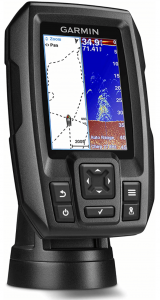
Key Features:
- Easy-to-use 3.5-inch color fishfinder with built-in, high-sensitivity GPS
- Find fish; mark and return to hot spots, docks, and ramps
- Convenient keypad operation
- Includes CHIRP (77/200 kHz) sonar transducer
- Upgrade to high-performance CHIRP with a GT8 or GT15 transducer
Specs:
- Display: 3.5″ GPS Fishfinder
- Weight: 8.1 oz (230g)
- Maximum depth: 1,600 ft freshwater, 750 ft saltwater
Garmin Striker 4 could show you an almost photographic representation of what is around you as you fish because of its high-frequency sonar. The detailed representations of structures, objects, and fish could simply guide you on where to go.
Could be used and installed easily, the device is available in screen sizes of 3.5 inches, 5 inches, or 7 inches, depending on what suits your needs. You can examine depths even at 1,600 feet below (for freshwater) and 750 feet (for saltwater).
This device could also help you check your speed to guide you as you troll with your lure. Plus, its GPS is also really helpful in navigating.
2. HawkEye Fishtrax 1C Fish Finder with HD Color Virtuview Display
- VirtuView ICON Display
- 200 kHz FishTrax Intelligent Sonar (14° Beam Angle)
- Fish Depth Scale
- Bottom Composition Indicators
- Audible Fish Alarm
Specs:
- Dimensions: 6 x 3 x 2 inches
- Item Weight: 9.4 ounces
- Maximum depth: 240 feet
This version of HawEye Fishtrax features an intelligence sonar that is dual-frequency and contains a fish depth identifier. With its HD Color Display, you could easily locate fish and read the depth of the water. It features a 14-degree beam angle for wider coverage and has bottom composition indicators, to know what’s located in the water. This also has a fish alarm you could easily hear to alert you of nearby fish.
What makes this suited for you is also its pair of functional airwave frequencies that allow you to fine-tune the sonar readings of the device effortlessly. With the correct accessory, you can easily mount this device on your boat or your kayak. Power this with 4 AAA batteries and it could last longer.
3. Lucky Portable Fish Finder Wired Sonar Sensor Transducer
Key Features:
- Underwater contour display
- Sensitivity Adjustment
- Fish alarm
- Multi –ways to use Lucky portable fish finder
Specs:
- Display: 2.4 inch
- Depth Capability: 328 feet
This fish finder has a 45-degree detect angle and could detect up to 100 meters from the surface. The underwater contour displays of this fish finder are already updated, clearer, and more professional. It is also easier to set up the features of this device like its fish alarm, depth alarm, screen brightness, fish icons, and language.
You can recharge this fish finder for greater power, as it comes with a USB cable for charging. When in full charge, this device could last up to 5 hours. Because you can easily carry this around, this is among the best portable fish finders for kayak fishing.
4. Raymarine Dragonfly Pro CHIRP Fish Finder
Key Features:
- Ultra-Wide CHIRP DownVision
- Dual-Channel CHIRP Sonar
- CPT-DVS Transom Mount Transducer
- Connect and Share Wirelessly
- Flexible Mounting Options
- Wi-Fish Mobile With Augmented Reality
Specs:
- Display: 4.3 inch
- Dimensions : 13.78 x 13.78 x 13.78 inches
- Item Weight: 2.3 Pounds
This elegant fish finder already has a built-in GPS to help you navigate as you fish. At 4.3 inches, this device is very portable and you can use this in any weather. It has a dual-channel sonar that provides you with a clearer image of the depth of water. This covers around 20,000 lakes and rivers of the US and Canada.
This fish finder is also very easy to mount. If you want reality mapping, then you can use this device along with an App called Wi-Fish for a more enjoyable fishing experience.
5. Venterior VT-FF001 Portable Fish Finder
Key Features:
- 5 user-selectable sensitivity
- Battery save mode
- Backlight mode
- Fish alarm
- Water depth shows by meters or feet
Specs:
- Dimensions : 10.63 x 6.65 x 2.48 inches
- Item Weight: 1.17 Pounds
- Max Depth Capability: 100m (328ft)
What’s great about this fish finder is that you can use it even at night because of its backlight mode. It can be used in any fishing environment like lakes and rivers. Plus, this comes with a 25 ft cable and a transducer float. You can also use its battery save mode to make it work for a longer time. This could detect up to 348 feet from the surface. This device comes with a two-year warranty so you are guaranteed great customer service.
With so many kayak fish finder options available on the market, selecting the right one can be intimidating. But it all comes down to your preference. We hope this guide helps provide you useful information related to the fish finders, and how to get the best one for you.

